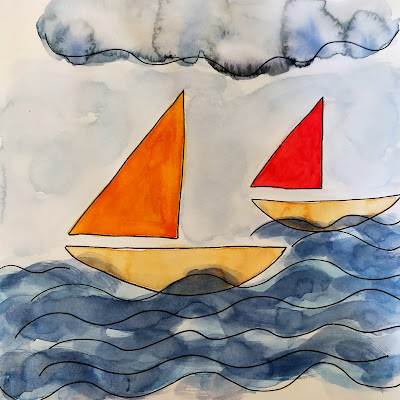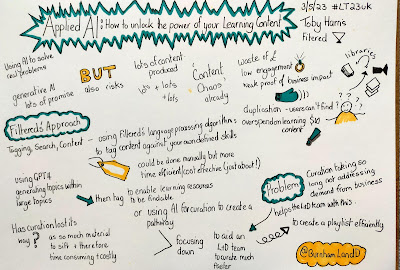Rachel Burnham writes: Back in early February we had a fire in our kitchen and had to call out the fire brigade. Whilst neither my son or myself were hurt, we have been unable to live in our home since then. I want to write about this experience and its impact. I am not writing this looking for help or advice – I have wonderful close friends and family who have been a tremendous support during this time. Instead, I want to focus on what I am noticing and my reflections on the experience so far.
What happened
The fire started with our toaster, one lunchtime. We were eating
in another room when the power cut out and when my adult son got up to check
the fuse box, he smelt smoke coming from the kitchen. Although the toaster was not in use at the
time, it had still been plugged in and by then the fire was well away – before too
long the kettle was in flame and the fire had spread to the top of the fridge/freezer. Our priority was to get out of the house, call
the fire brigade and alert our neighbours from the houses adjourning. Two fire engines arrived very quickly and
they soon had it put out. It was in many
ways a small fire - but it left us with no electricity downstairs, a wrecked
kitchen and smoke damage throughout the whole house. Four months on we are still dealing with
insurance, the entire contents of the house is in the process of being destroyed
or cleaned and put into storage. We have
just got a date for the work to start and it is likely to be another 10 weeks
before we can begin to move back in.
Gratitude
We have a great deal to be grateful for! Neither of us was hurt, the fire was
relatively easily contained, the fire brigade were super, we are fully insured
and my parents live nearby and were willing and able to take us both in. My son was able to get extensions for his
course work and got caught up and I have been able to work from my parents’
house. We both get on very well with my
parents and as they are both in their late 80s it is great to have the opportunity
to spend more time with them. They have
even got me interested in cycling by watching the Giro D’Italia together and I
am now keenly looking forward to the Tour de France.
Impact
But of course, this whole experience has had an impact on us. I would like to share some of what I notice
in myself – it does vary a lot from day to day, so some weeks I am fine and
some hours or days I am really struggling with it.
· Initial
shock – In the first few weeks there was the effect of the
initial shock and the adrenaline of trying to tackle insurance claims and get settled
into our temporary living quarters. I
found sleeping very difficult at this stage and kept waking up either with
worry about insurance or smelling smoke.
· Uncertainty
–
I am used to working as an independent consultant with a very fluid diary and
changing patterns of work, but the aftermath of our fire has generated so much
uncertainty and made any planning beyond the immediate exceptionally
difficult. There is uncertainty over big
stuff: timescales, what happens next, who is doing what, what the insurance
covers, what will need to be destroyed because of smoke damage and uncertainty
over small matters – ‘which paper pile did I put the last water bill in?’ One of my notebooks is now entirely given
over to lists of fire related business and I have several digital spreadsheets too.
· Loss
of agency/control – I am definitely finding the loss of control a
challenge – having other people pack up the contents of my house and having little
opportunity to get organised before - for example I keep wondering whether the
TV and DVD controls have gone in the same box as the wires for this equipment
and a thousand and other similarly small anxieties. It is also hard not being in my own home – it
is 40 years since I last shared a house with my parents – I am used to making
the rules. (There will be a parallel
loss for my parents too.)
· Cluttered
mind – I find that my mind is less sharp than usual and also
seems much more narrowly focused – at times there is a lot to get your head
around and not much energy for anything beyond what has to be done whether work
or house-related. Sometimes weeks go by
with no contact at all from insurers/builders etc and then there will be a
flurry of communication with multiple decisions needed.
· Mourning
for my home and garden - I am feeling a real sense of loss for ‘our
home that was’, particularly since the company started packing up and clearing
our house. Not only are there specific things that the fire destroyed, but also
furniture that has had to be destroyed due to smoke damage, including some furniture
that had come from previous generations.
As many of you will know I love gardening and I have also felt the loss
of time in my garden this spring and summer – some of the plants in pots are really
suffering from lack of watering during this hot dry early summer – I am not
sure that they will survive. I do know
that we will get to unpack in time and will make a new home and this will have
its joy, but right now, we are without a home.
I have found myself painting little hopeful boats in rough seas, which
expresses some of these feelings.
 |
| 'Unmoored' |
· Resilience
–
I have had more colds, viruses and other physical ailments in the last 4 months
than since I was two! I guess I must have
less resilience and ability to bounce back.
It certainly feels that way emotionally – I managed to wash a pair of
new trousers with pale coloured clothes and dye them all primrose yellow last
week – normally I would have taken that in my stride, but this time it felt
like a disaster.
Self-care
During this time all the usual suspects have been extra important
and valuable. I have been exercising
each day, eating lots of healthy food, cooking favourite and new dishes,
walking in the park – it has been particularly good to do this with my father,
and working on the allotment. The first
time after the fire, that my son and I got to the allotment we felt this huge
sense of peace and relaxation – even though we were digging and chopping, so we
have made it an essential part of our week.
The other crucial element has been time and contact with
close friends with opportunities to share how we are feeling and also do
completely different things. And it was
great to get back to painting and drawing regularly after the immediate press
of insurance claims.
Reflections
· One of
the things I am reflecting on is what happens to our resilience when we face an
extended period of stress and challenging circumstances – when we are in it for
the long-haul. For example, I have a
number of friends who are or have been caring for parents who are seriously
ill. I am not sure that we focus
sufficiently on the kind of support that people need when resilience is tested
over an extended period.
· It is
good to talk and share how we feel. This
has been an important message around mental health for many years. My experience over these last few months has
been mixed. I have great close friends
who have listened and I have felt heard by.
I have also sometimes shared something of how I have been feeling at the
time and not felt listened to. It is
interesting how quickly many people are to offer advice or remind you to feel
gratitude – I have noticed how this has made me feel. I wonder if hearing
someone talk about how they are struggling is too hard sometimes for us and so
we close it down and make it more comfortable by turning to a positive ‘Be
grateful that neither of you were hurt’ or ‘Lucky you, new kitchen!’. It has
made me more conscious of my own behaviour when people are sharing with me. I
have been reflecting on the extent to which I really listen and how powerful
and healing it can be when someone does.
· We are
all different. One of things that has
been said to me and intended as a comfort, is that ‘things can be replaced, but
people can’t’. And at one level this is
true. I have been reflecting on why I
have felt so distressed at the thought of various belongings or pieces of furniture
being destroyed. It is because whilst they
are just things – together they make ‘home’. Now that ‘home’ has gone – for us this will be
a temporary thing, but for refugees and for homeless people how big and how
painful that loss must be? But it is
also about the way that some things become interwoven with your own life story. For some people photographs are important – I
am not a photo person. Instead, for
example, I found myself really upset when I realized that my steamer had been
destroyed – it was given to me by my parents when my son was born, so that I
could make baby food for him. Each time
I cooked with it, those memories were there and I suppose I had thought I would
pass it onto him, perhaps for him to make baby food for a child of his own? We are all different and what has meaning
for us is different too. We are so quick
to see things through our eyes, values and experiences and it is so hard to see
them through someone else’s.
Rachel
Burnham
13 June
2023
I help
individuals and organisations to use visuals to think, learn and work more
effectively, particularly though using Sketchnoting and drawing.






